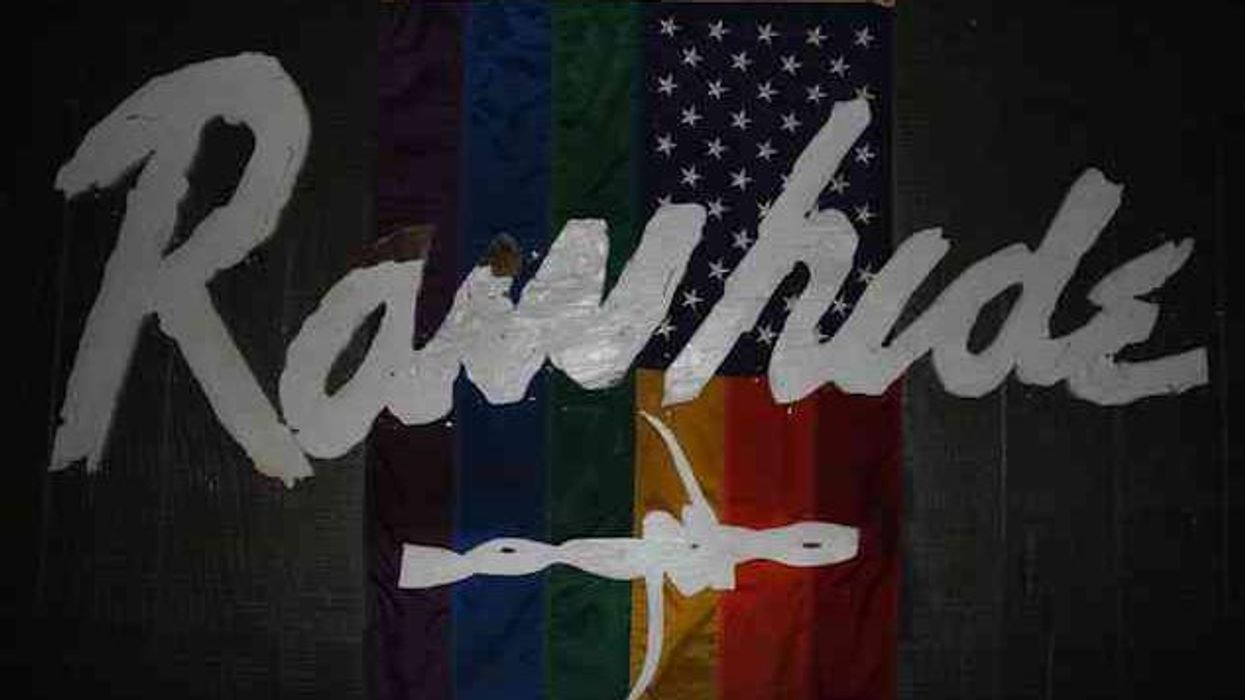
Photographer Jonathan Hollingsworth captured the storied New York City bar before it closed its doors.
April 29 2013 7:45 AM EST
By continuing to use our site, you agree to our Privacy Policy and Terms of Use.

Maybe you didn't notice, but last month a New York City institution closed its doors forever. As The Rawhide reported on its Facebook page, March 31 was the final day for the leather bar, which was opened in 1979 and located on the southeast corner of West 21st Street and Eighth Avenue for 34 years.
The bar may have not seemed like much to many, but it was even mentioned by New York City Council Speaker (and mayoral candidate) Christine Quinn in a recent story in New York magazine. "One of the things I loved about Chelsea," she said, "is that on Eighth Avenue, there is the Rawhide bar—not a luxury product. And for many years there were Latino guys from the neighborhood who had a folding card table every Friday and Saturday night and played dominoes. And they knew every guy who walked into the Rawhide, and every guy that walked in the Rawhide knew them. A leather bar may or may not be the best example, but it is the type of neighborhood experience we want to be able to have, what Jane Jacobs called 'the eyes on the streets' all watching out for each other."
Well, no more. As Jeremiah's Vanishing New York reported, "the new landlord has jacked up the rent, nearly doubling it from $15,000 to $27,000 a month." As Michael Musto has reported, the bar plans to reopen at East 58th Street and Third Avenue in Midtown East (near piano bar The Townhouse)—a far cry from its Chelsea home. Luckily photographer Jonathan Hollingsworth visited Rawhide before its demise and documented the bar's quirks and character. We have a slideshow of some of his images.
SLIDESHOW: Remembering The Rawhide
OutTraveler: Why did you take the photos?
Jonathan Hollingsworth: I used to live two blocks west on 21st Street, so the place really was my neighborhood bar. Once you stepped through the curtains into the blackened bar, leaving the noise and glare of the city behind, you definitely felt like you were entering a parallel universe. In those first seconds, it was impossible to see, so as you froze in place letting your eyes adjust, there was also a certain "letting go." The time of day ceased to matter because inside, it was always Saturday just past midnight.
So yes, I was interested in capturing the place from a historical perspective. But more than anything, I took the pictures because it's a place that matters to a lot of us. And a picture is a place holder for all the things we don’t get to keep.
Do you have any special memories of the bar?
The day that Hurricane Sandy was supposed to hit, my partner and I were hunkered in our apartment—but one can only look out the window, staring at an uneventful sky for so long. So as we stepped through those black curtains of Rawhide, it was apparent that a lot of other people in the neighboring blocks had the same cabin fever.
It was a Monday afternoon and people were drinking and dancing and chatting, and there was of course an edge because we didn't know if this would be real, or the same fizzle of Irene. But when the trash cans started blowing down the street and the façade of a neighborhood building collapsed, we were home in three minutes flat. It was a last hurrah before the punishment that followed.
What do you think we're losing with the last of the "leather" bars closing in Chelsea?
New York is actually more of a verb than a noun, because it’s engaged in an endless evolution of building, tearing down, and rebuilding. Before Rawhide was a bar, it was a candy store. In a few dozen coats of paint, it will probably be a bar again. The great and terrible fact of this city is that as soon as you fall in love with something here, it breaks your heart by becoming something else.
Tell us a bit more about your own creative output and photography. Any other projects?
Photography is my way of giving attention to populations who are otherwise overlooked. In the first years after the Iraq War, I travelled around California, photographing people 30 and under holding hand-written signs expressing their thoughts on the war. My most recent book, Left Behind, documents the personal effects of border crossers who perished in the Sonoran Desert in Arizona.
In a few weeks, the southeast corner of 21st and 8th Ave. will probably be another bank, nail salon, or frozen yogurt shop on an avenue that already has too many of these. But at least there will be pictures to prove that, for a time, this place was ours.